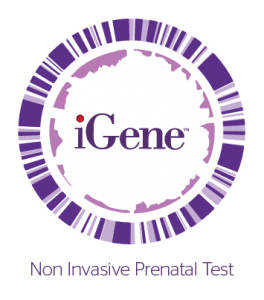
An essential step in providing peace of mind, prenatal testing ensures that pregnant mothers stay informed about the status of their pregnancy. Non-Invasive Prenatal Testing (“NIPT”) is a screening test that analyses foetal DNA in a mother’s blood to screen for foetal chromosomal abnormalities.
iGene® is a non-invasive prenatal test that can detect chromosomal abnormalities, including trisomy aneuploidies, sex chromosome aneuploidies, and deletion syndromes, while providing information on foetal sex, if required.
Requiring only maternal blood drawn from the mother, iGene® is based on Next Generation Sequencing technology that analyses blood samples via a Whole Genome Sequencing approach.

The iGene® test panel is available in 2 options: CORE and COMPREHENSIVE.
| PANEL | CONTENT |
| iGene® Core | Trisomy Aneuploidies: Trisomy 21 (Down Syndrome) Trisomy 18 (Edwards Syndrome) Trisomy 13 (Patau Syndrome)Sex Chromosome Aneuploidies: Monosomy X (Turner Syndrome) 45, X0 Trisomy X (XXX Syndrome) 47, XXX Jacobs Syndrome 47, XYY Klinefelter Syndrome 47, XXYFetal Sex (Information on fetal sex will be reported if requested) |
| PANEL | CONTENT |
| iGene® Comprehensive |
Trisomy Aneuploidies: Sex Chromosome Aneuploidies: Fetal Sex (Information on fetal sex will be reported if requested) Deletion Syndromes: Additional Trisomies: |
Patients are advised to consult obstetricians on eligibility before taking these tests. Early screening and detection of potential conditions enables expectant mothers to make informed decisions and address baby’s health needs upon birth.

